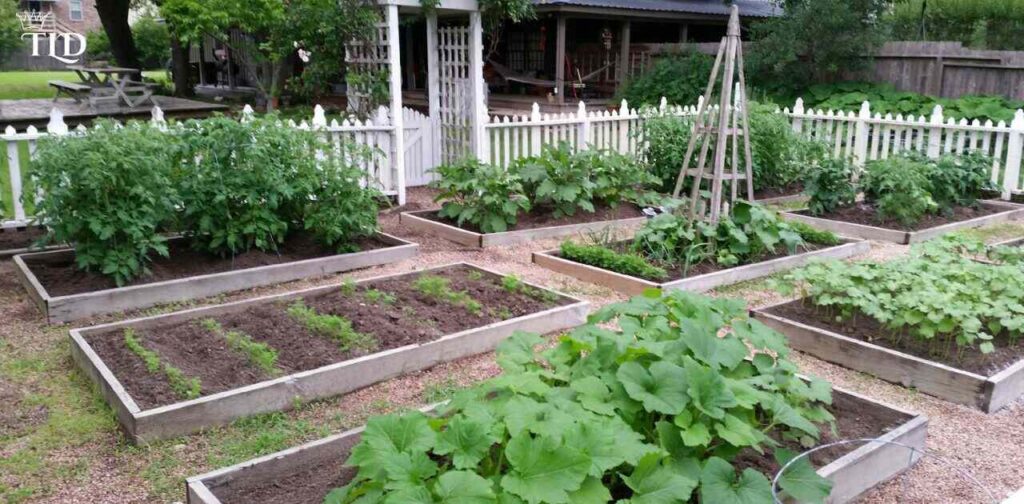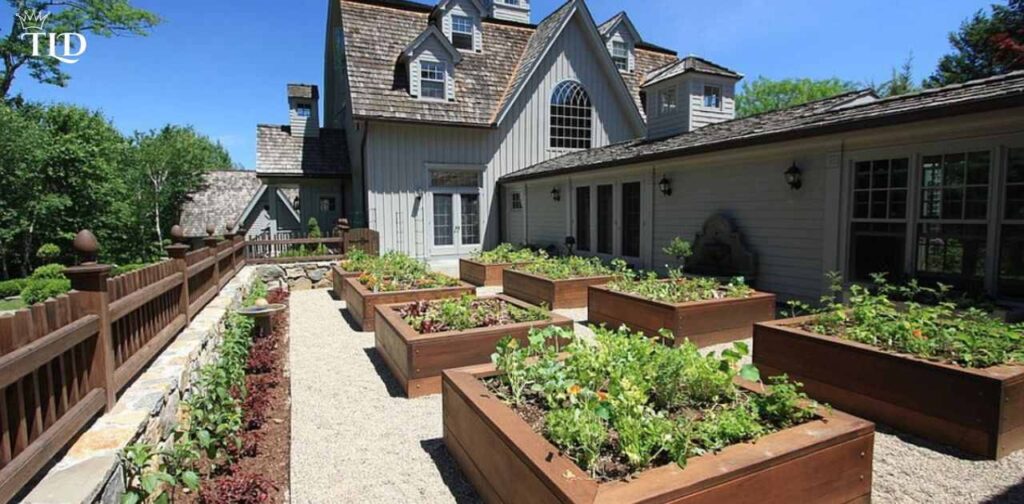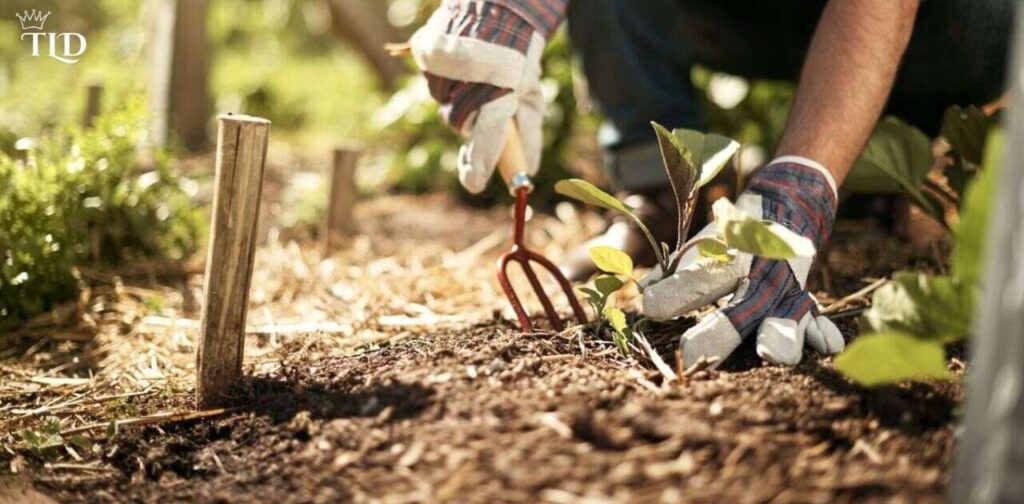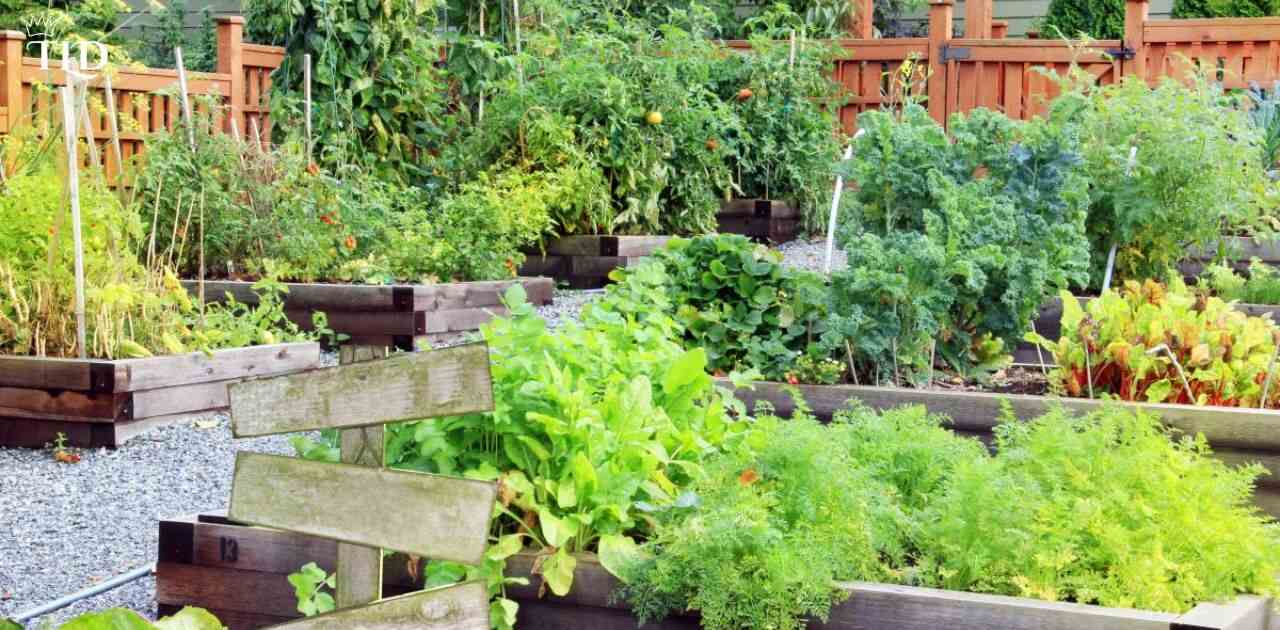Starting a vegetable garden is a deeply rewarding project, providing fresh produce and a connection to nature. However, one of the most critical decisions you’ll make is choosing the right materials for your garden beds. A common question among gardeners is whether pressure-treated lumber, particularly from Home Depot, is safe to use in vegetable gardens. This comprehensive guide delves into the safety concerns, explores alternatives, and offers best practices for using pressure-treated wood in your garden to help you make an informed decision.
What is Pressure Treated Lumber?
Pressure-treated lumber is a type of wood that has been chemically treated to resist decay, insects, and moisture, significantly extending its lifespan. The process involves placing the wood in a vacuum chamber, where preservatives are forced deep into its fibers. This treatment makes the wood an excellent choice for outdoor projects exposed to the elements, such as decks, fences, and garden beds.
Common Uses of Pressure-Treated Lumber
Due to its enhanced durability, pressure-treated lumber is a popular material for various outdoor applications. Some of its most common uses include:
- Decking: Used to build durable and weather-resistant decks that can withstand heavy foot traffic and exposure to the elements.
- Fencing: Ideal for constructing fences that are resistant to rot, insects, and other environmental factors.
- Garden Beds: Frequently used in raised garden beds due to its ability to resist decay and provide long-lasting support for soil and plants.
- Outdoor Furniture: Employed in making outdoor furniture such as benches, tables, and chairs that can endure outdoor conditions.
Types of Chemicals Used in Pressure Treatment

Historically, pressure-treated wood was preserved using Chromated Copper Arsenate (CCA), a chemical effective at protecting wood from decay and insects but also raised significant health and environmental concerns due to its arsenic content. In response to these concerns, the Environmental Protection Agency (EPA) restricted CCA use for residential purposes in 2003, leading to the development of safer alternatives.
Today, the most commonly used chemicals in pressure-treated lumber are:
- Alkaline Copper Quaternary (ACQ): A copper-based preservative combined with quaternary ammonium compounds, which provide excellent protection against rot and insects.
- Copper Azole (CA): Another copper-based preservative that includes organic biocides, enhancing resistance to fungi and insects.
Both ACQ and CA are considered safer alternatives to CCA, but concerns still linger about their potential impact on soil and plants, particularly in vegetable gardens.
Understanding the Safety Concerns
When considering pressure-treated lumber for vegetable gardens, it’s essential to understand the potential risks associated with the chemicals used in the treatment process. If you’re also wondering how to get tulips in Merge Gardens, the primary concern remains whether these chemicals can leach into the soil and be absorbed by the plants, potentially contaminating the vegetables you plan to consume.
Chemicals in Modern Pressure-Treated Lumber
Modern pressure-treated lumber, treated with ACQ and CA, uses copper as its primary active ingredient. While copper is a naturally occurring element and an essential micronutrient for plants, excessive amounts can be toxic to both plants and soil organisms. Additionally, the ammonium compounds and organic biocides used in these treatments raise questions about their environmental impact.
Potential Risks:
- Chemical Leaching: Research has shown that while ACQ and CA-treated wood can leach small amounts of copper into the soil, the levels are generally low and decrease over time. However, factors such as soil pH, moisture levels, and the proximity of plants to the treated wood can influence the extent of leaching.
- Impact on Soil Health: High concentrations of copper in the soil can negatively affect beneficial microorganisms, potentially disrupting the delicate balance of soil health and plant growth.
- Plant Absorption: Most vegetable plants do not absorb significant amounts of copper or other chemicals from treated wood. However, root crops like carrots, potatoes, and beets, which grow close to the soil surface, may be more vulnerable to exposure.
Are These Chemicals Harmful to Vegetable Gardens?
The consensus among researchers and experts is that modern pressure-treated lumber is relatively safe for use in vegetable gardens when appropriate precautions are taken. Let’s explore what the studies say and consider expert opinions.
Research Studies:
- University of Minnesota Study: A study conducted by the University of Minnesota found that the levels of copper and other chemicals in the soil near pressure-treated wood were generally within safe limits for vegetable gardening. The study recommended using a barrier, such as heavy-duty plastic, between the wood and the soil to further reduce the risk of chemical leaching.
- University of California Research: Research from the University of California Agriculture and Natural Resources supports the safety of using modern pressure-treated lumber in gardens. The study highlights that the risk of harmful exposure is minimal when proper construction practices are followed, such as using a barrier between the soil and the wood.
Expert Opinions:
- Horticulturist Susan Barton: Susan Barton from the University of Delaware notes that while some gardeners may prefer to avoid pressure-treated wood altogether, the risk posed by ACQ and CA-treated wood is low, especially if precautions like lining garden beds with plastic are taken.
- Environmental Scientist Dr. Richard Smith: Dr. Richard Smith emphasizes that the key to safe use is understanding the specific conditions of your garden, such as soil type and plant varieties, and taking steps to minimize any potential risks.
Home Depot’s Pressure Treated Lumber Products
Home Depot offers a wide range of pressure-treated lumber products that are suitable for various outdoor projects, including vegetable gardens. Understanding the products available and their safety standards can help you make an informed decision about whether to use them in your garden.
Product Overview
Home Depot offers a wide range of pressure-treated lumber products that are suitable for various outdoor projects, including vegetable gardens. When choosing pressure-treated lumber: which preservative level is best? Understanding the products available and their safety standards can help you make an informed decision about whether to use them in your garden.
Variety of Products:
- 2×4 and 2×6 Boards: Ideal for constructing raised garden beds and borders. These boards are easy to work with and provide sturdy support for soil and plants.
- Posts: Useful for creating sturdy supports for trellises, garden fences, and other structures that require vertical stability.
- Timbers: Suitable for building larger garden structures or retaining walls, offering significant strength and durability.
Safety Standards
Home Depot’s pressure-treated lumber complies with industry safety standards, ensuring that it is safe for use in residential and garden projects.
Safety Certifications:
- American Wood Protection Association (AWPA) Standards: Home Depot’s pressure-treated lumber meets AWPA standards, which ensures that the wood is treated to resist decay and insect damage effectively.
- Environmental Protection Agency (EPA) Guidelines: The lumber complies with EPA guidelines, guaranteeing that the chemical treatments used are approved for residential use and pose minimal risk to human health and the environment.
Customer Reviews and Experiences
Customer feedback provides valuable insights into the real-world performance and safety of Home Depot’s pressure-treated lumber in vegetable gardens.
User Feedback:
- Many customers report positive experiences using Home Depot’s pressure-treated lumber for garden beds, noting that it is durable, easy to work with, and provides long-lasting support for their plants.
- Some customers express concerns about chemical leaching, particularly in regions with high rainfall or acidic soil. However, these concerns are often alleviated by using a plastic liner or landscape fabric to create a barrier between the wood and the soil.
Common Concerns:
- Chemical Smell: Some users have noted a lingering chemical odor after installation, which usually dissipates after a few weeks of exposure to the elements. This is a common characteristic of freshly treated wood and does not indicate a safety hazard.
- Color Fading: Over time, the wood may lose its greenish tint, which is a normal occurrence as the copper in the treatment oxidizes. This color change does not affect the wood’s structural integrity or safety.
Alternatives to Pressure Treated Lumber for Vegetable Gardens

For those who prefer to avoid pressure-treated wood altogether, several alternative materials can be used to construct garden beds. Each alternative offers its own advantages and considerations, allowing gardeners to choose the best option for their specific needs and preferences.
Natural Wood Options
Naturally resistant woods are an excellent alternative to pressure-treated lumber, offering durability without the need for chemical treatments.
Cedar and Redwood:
- Cedar: Known for its natural resistance to decay and insects, cedar is a popular choice for garden beds. It is lightweight, easy to work with, and has a pleasant aroma. However, cedar can be more expensive than other wood options, making it a premium choice for garden construction.
- Redwood: Like cedar, redwood is naturally resistant to decay and pests. It has a beautiful, rich color and is highly durable, making it a great option for long-lasting garden beds. Redwood is also pricier than pressure-treated wood and may be less readily available outside certain regions.
Pros and Cons:
| Material | Pros | Cons |
|---|---|---|
| Cedar | Natural resistance to decay, lightweight, aesthetically pleasing | More expensive, less widely available |
| Redwood | Durable, resistant to decay, attractive color | High cost, limited availability outside certain regions |
Composite and Recycled Materials
Composite and recycled materials are becoming increasingly popular for garden beds due to their durability, low maintenance, and environmental benefits.
Durability:
Composite materials, made from a blend of wood fibers and plastic, are highly resistant to rot, moisture, and pests. They require little maintenance and can last for decades, making them a cost-effective option in the long term.
Environmental Impact:
Using recycled plastic lumber reduces waste and the demand for virgin wood, making it an environmentally friendly choice. However, the production of composites does involve energy-intensive processes, so it’s important to weigh the overall environmental impact when choosing these materials.
Stone and Concrete
For gardeners seeking a more permanent and low-maintenance option, stone and concrete can be excellent alternatives to wood for building garden beds.
Stone:
- Natural Stone: Natural stone, such as granite or limestone, is extremely durable and can last a lifetime without requiring maintenance. It also adds an aesthetically pleasing, rustic look to the garden. However, stone can be expensive and challenging to work with due to its weight.
- Concrete Blocks: Concrete blocks offer a more affordable and flexible option for constructing garden beds. They are easy to stack and configure into various shapes, and they provide excellent durability. However, concrete can leach lime into the soil, potentially raising the soil pH and affecting plant growth.
Best Practices for Using Pressure Treated Lumber in Vegetable Gardens

If you decide to use pressure-treated lumber in your vegetable garden, following best practices can help minimize any potential risks and ensure the safety of your plants.
Minimizing Risks
Taking steps to reduce the likelihood of chemical leaching can help protect your garden and ensure that your vegetables remain safe to eat.
Barrier Techniques:
- Plastic Liners: Placing a heavy-duty plastic liner or landscape fabric between the wood and the soil can significantly reduce the risk of chemical leaching. This barrier prevents direct contact between the treated wood and the soil, minimizing the chance of chemicals seeping into the ground.
- Raised Bed Inserts: Using pre-formed plastic or metal inserts within your raised beds can provide an additional layer of protection, keeping the soil and plants completely isolated from the treated wood. These inserts are available in various sizes and can be custom-fitted to your garden beds.
Construction Tips:
- Seal Cuts and Edges: Whenever you cut pressure-treated wood, the freshly exposed surfaces are more prone to leaching. Applying a wood sealant to these areas can help lock in the chemicals and reduce their exposure to the soil.
- Avoid Direct Contact: Design your garden beds so that the wood doesn’t come into direct contact with edible plants. Use non-treated wood, stone, or another material for the top edges where plants might touch the wood directly.
Long-Term Maintenance
Maintaining your pressure-treated garden beds properly can extend their lifespan and ensure continued safety.
Inspection:
Regularly inspect the wood for signs of damage, such as splitting, cracking, or significant wear, which could increase the risk of chemical exposure. Replace any damaged sections promptly to maintain the integrity of your garden beds.
Soil Testing:
Conduct periodic soil tests to monitor for any buildup of copper or other chemicals in the soil. Soil testing kits are readily available and can provide peace of mind by ensuring your garden remains safe for growing vegetables. If elevated levels of chemicals are detected, consider adding fresh soil or organic matter to dilute the concentration.
Conclusion
Using pressure-treated lumber from Home Depot in your vegetable garden is generally considered safe, especially when modern preservatives like ACQ and CA are used. While there are some concerns about chemical leaching, these can be effectively mitigated with proper precautions such as using plastic liners, sealing cut edges, and following best practices for garden construction.
For those who prefer to avoid any potential risks, alternatives like cedar, redwood, composite materials, stone, or concrete offer excellent durability and safety. Ultimately, the choice depends on your specific needs, preferences, and budget. By following the best practices outlined in this guide, you can enjoy a thriving vegetable garden, confident that your materials are safe for both you and the environment.
FAQs
Is it safe to use pressure-treated lumber for raised beds?
Yes, when proper precautions like using a liner or barrier are taken, pressure-treated lumber is generally safe for raised beds.
How long does pressure-treated lumber last in a garden?
Pressure-treated lumber can last 10-20 years or more in a garden, depending on the climate and maintenance.
Can pressure-treated lumber affect the taste of vegetables?
There is no evidence to suggest that the chemicals in pressure-treated lumber affect the taste of vegetables.
What are the signs of chemical leaching in soil?
Signs may include unusual plant discoloration or growth patterns, though these are rare. Regular soil testing is the best way to monitor for chemical leaching.
What are some eco-friendly alternatives to pressure-treated lumber?
Cedar, redwood, composite materials, stone, and concrete are all excellent eco-friendly alternatives to pressure-treated lumber for garden beds.











